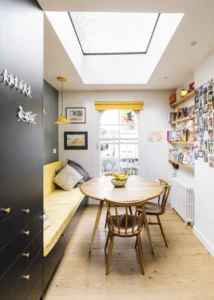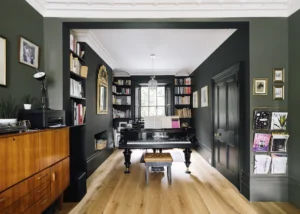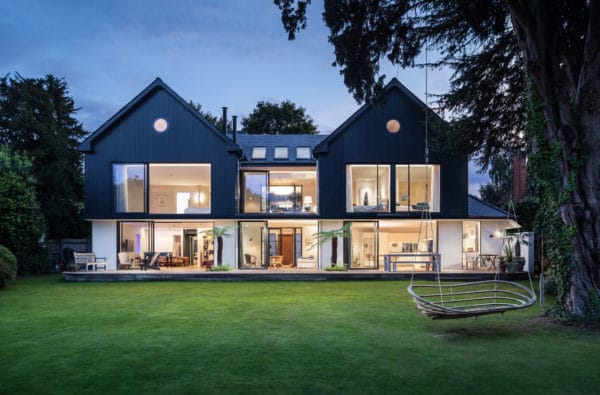Urban Terrace Renovation & Extension for a Multigenerational Family
Set in north London’s leafy Canonbury conservation area, this distinctive grade II-listed Georgian townhouse has been renovated and reconfigured for the owners, who wanted a home to suit three generations of their family.
Architect If_Do was commissioned to create two separate, but linked, homes for the grandparents, their children and the grandchildren. “This project came at a moment of transition for our clients, with the arrival of a new generation, and the need to adapt to the ageing grandparents’ changing requirements,” says Al Scott of If_Do.
“The challenge was to convert a dwelling that had been a single-family house for many years, to create two separate but interconnected homes for the different generations.”
Designing the Perfect House Renovation
The property is in a prime position, with a wonderful east-to-west orientation and views onto a small park beyond the rear garden. Key to the clients’ brief was preserving the generous amount of daylight that enters the home on all floors, as well as protecting the open views, and enhancing the visual connections to the garden and park.
Over the years, the house had only ever seen minor alterations – including the addition of a small, lower ground floor extension. The home’s original closet wing was still clearly defined, and the local planners showed a desire for this and other elements of the home’s historic character, especially to the rear, to be maintained.
Read More: Structural Options & Considerations for a Home Extension: Your Complete Guide

The extensions either side of the home make a contemporary statement against the build’s original brick facade
Two lead-topped glass, steel and timber rear extensions create a new lower ground floor flat for the grandparents, and a larger family home on the upper levels. These two extensions, similar in materials and character create a unified home and provide equal access to the shared garden, yet offer clear differentiation between the two domains.
“Because the fabric of the house had been relatively untouched, we wanted to intervene in a way that subtly enhanced its Georgian character, particularly through the language of the original closet wing,” says Al. “These offer up the solution to the challenge of the brief: the two new extensions provide separate garden rooms for the two domains, while the original outrigger gives the moment of connection between the two.”
- Location London
- ProjectRenovation
- Size300m2 (flat 75m2, house 225m2)
- Project Cost £477,00
- Architect If_Do Architects
- Building Contractor ASB Group
Interior Alterations
Inside, a series of reorganised spaces with new openings helps to establish a distinction between the flat and the home above – all the while maintaining the internal link between them. The lower ground floor extension provides a small study space, which is adjacent to the bedroom, and leads out to the garden. On the ground floor, a new garden room elongates the house’s original side return extension, creating a dramatic linear kitchen with views to the front and the rear.

The galley kitchen leads down to the home’s extension, providing light and fantastic views out to the garden
The original staircase connects the house and the lower ground floor flat internally. A single door links the two domains, and the family can meet on the half landing that leads directly out to the shared garden. The arrangement allows for full flexibility, enabling the flat to operate as a discrete, secure unit, while also allowing for the two properties to be occupied as one in the future.
Thinking about what you’ll be able to create within your budget? Read our guide to Extension Costs: What Can I Build For My Budget?
Adding Characterful Features
On the first and second floors, and in the ground floor reception spaces, a palette of hardwood and dark paint colours reflects the historic character of the dwelling. The new extensions, by contrast, are intentionally bright, light, and timber-lined to maximise the connection to the garden, with contrasting steel detailing on the flitch beams, which amplify the geometric form.

The interior remains in keeping with its period features, with marble fireplaces and decorative cornices
Outside, the house’s Georgian character has been respected and complemented, especially to the rear. The design of the two extensions echoes the form of the existing closet wing, with a series of shifting volumes of differing heights and depths. Although contemporary in style, the new structures were specifically designed to reflect the legacy of the property’s past.
































































































 Login/register to save Article for later
Login/register to save Article for later



















